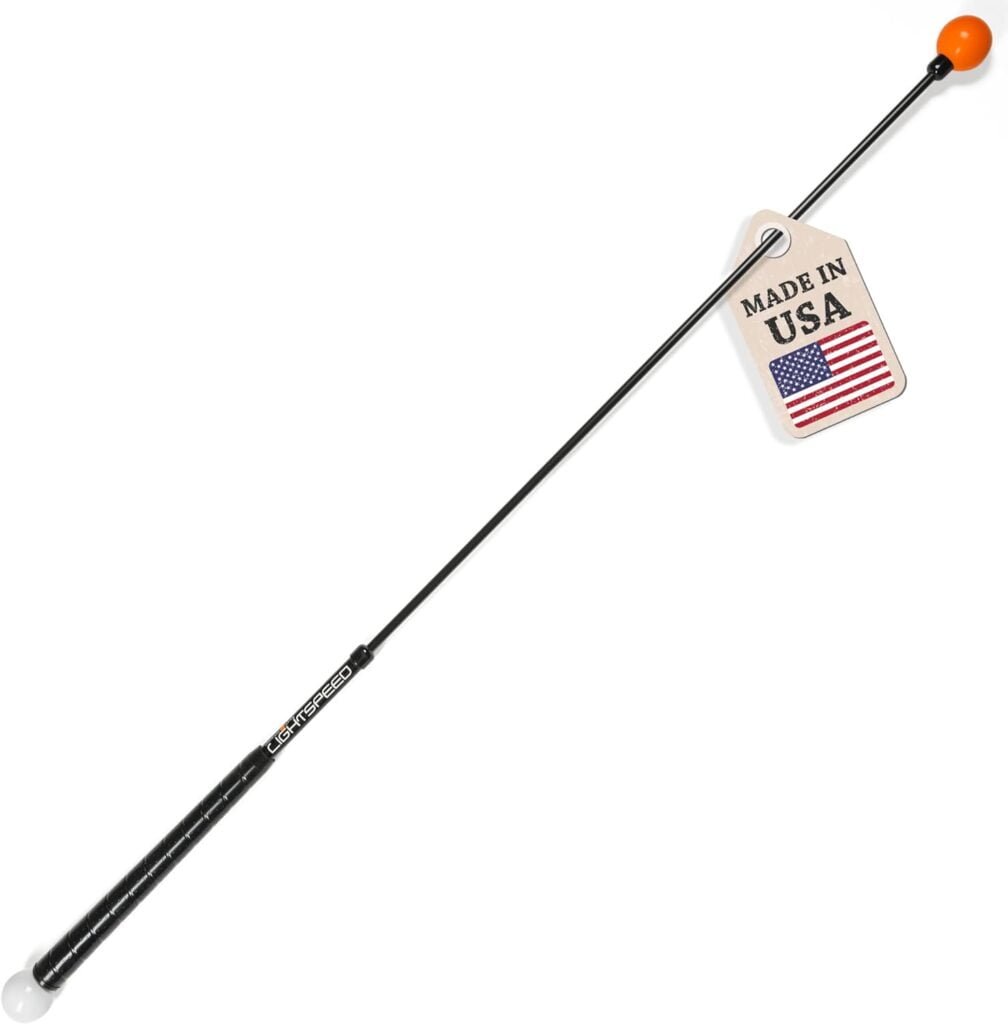Maintaining Consistent Golf Swing Speed
Introduction
Keeping consistent golf swing speed is crucial for any golfer looking to enhance their game through precision and power. This delicate balance is fundamental, as every golfer, from beginners to seasoned pros, aims to perfect a smooth, repeatable swing that ensures each shot is effective and consistent. Not only does a consistent swing speed help in hitting the ball further, but it also improves overall game performance, achieves greater accuracy, and lowers scores on the course.
Mastering your swing speed is transformative, requiring both physical prowess and technical understanding. This comprehensive guide will explore various facets of golf swing speed. Starting with the basic concepts and factors that influence it, we will delve into advanced techniques and exercises designed to help maintain and increase your swing speed.
We will detail effective techniques to enhance swing speed, followed by specific training routines and exercises to boost physical capabilities. The discussion will also cover the role of modern equipment in achieving consistency and how technology can aid your efforts.
The guide concludes with practical advice on sustaining your swing speed, ensuring peak performance in every round. Whether refining techniques, building strength, or understanding swing mechanics, this guide provides the necessary tools and knowledge to elevate your golf game.
Get ready to delve deep into maintaining your golf swing speed and transform your approach to the sport.
Section 1: Understanding Golf Swing Speed
What is Swing Speed?
Swing speed in golf refers to the rate at which the club head moves through the air during the swing, measured in miles per hour (mph). This metric is crucial because it directly influences the distance the golf ball will travel. A faster club head speed generates more power, resulting in longer shots. However, it’s not just about speed; consistency in your swing speed ensures that your game remains stable under different playing conditions and pressures.
Factors Affecting Swing Speed
Several factors can influence a golfer’s swing speed, ranging from physical attributes to technical skills and even the equipment used:
- Physical Strength and Flexibility: Stronger, more flexible muscles can accelerate the golf club more efficiently, increasing club head speed. Exercises that enhance core strength, upper body strength, and flexibility can directly impact your ability to swing faster.
- Technique: The mechanics of your swing—from grip and stance to how you rotate your body—are foundational to achieving optimal club head speed. Minor adjustments in your posture or swing timing can significantly affect speed and consistency.
- Equipment: The type of golf club you use plays a significant role. Clubs with the proper shaft flex, length, and head design can complement your natural swing style and potentially increase your club head speed.
Benefits of a Consistent Swing Speed
Maintaining consistent golf swing speed offers several benefits that can improve your overall game:
- Improved Distance Control: Consistency in club head speed helps accurately judge and control the distance your golf ball will travel. This control is vital for playing on courses with varied layouts and conditions.
- Enhanced Accuracy: A steady club head speed reduces the likelihood of errors during the swing, leading to more accurate shots. Consistency minimizes the variables in your swing, allowing for better aim and shot placement.
- Better Game Adaptability: Adapting to different courses and conditions becomes easier when you have a reliable club head speed. Whether it’s windy conditions or different turf types, a consistent speed helps make necessary adjustments without overhauling your swing mechanics.
Understanding your golf swing speed and being consistent is more than just practicing hard; it’s about practicing smart. This includes focusing on your physical condition, refining your technique, and choosing equipment that enhances your natural abilities. As we progress in this guide, we’ll explore specific strategies and exercises to help you increase and maintain a reliable club head speed, ultimately leading to a more enjoyable and successful golfing experience.
Section 2: Techniques to Increase Swing Speed
Increasing your golf club head speed is not just about hitting the ball harder; it’s about fine-tuning various aspects of your technique and approach to the game. Here, we will delve into fundamental and advanced techniques that can significantly enhance your swing speed.
Fundamental Techniques
Proper Grip and Stance:
A proper grip is the foundation of a powerful and consistent swing. It should be firm yet relaxed to allow a fluid motion. Your stance, including the position of your feet, knees, and hips, should promote balance and stability. The alignment of these elements should encourage a natural, unhindered swing path.
Backswing and Downswing:
- Backswing: A controlled and steady backswing sets the stage for a powerful downswing. It should be smooth and not rushed, focusing on coiling up your body to store energy. Maintaining a consistent tempo and avoiding jerky movements that can throw off your rhythm is critical.
- Downswing: This is where you unleash the energy stored during the backswing. Initiate it with your hips, followed by your torso, and finally, your arms and hands. This sequence ensures maximum power transfer to the clubhead, increasing the speed at which it strikes the ball.
Advanced Techniques
Speed Drills and Exercises:
To further enhance your swing speed, specific drills, and exercises can be incorporated into your practice routine:
- Overspeed Training: Using lighter clubs during practice sessions can train your muscles to move faster than usual. Alternating between lighter and standard clubs during practice sessions can gradually increase your natural club head speed.
- Whip Drill: This involves swinging a golf towel or similar flexible item to focus on generating a whipping motion at the bottom of the swing. This drill helps improve the acceleration of your club head.
Video Analysis and Professional Coaching:
Utilizing video analysis tools or working with a coach can provide critical insights into your swing mechanics. Slow-motion playback can reveal aspects of your swing that need improvement, such as timing, body alignment, and club path. Professional coaches can offer personalized advice and adjustments, helping you optimize your swing for better speed and consistency.
Enhancing Your Technique
Improving club head speed involves understanding golf mechanics and preparing your body to execute those mechanics efficiently. Focusing on these fundamental and advanced techniques allows you to develop a more powerful swing that remains consistent under various conditions. The following section will build on this foundation by exploring specific training routines and physical exercises to enhance your golf swing and overall fitness.
Section 3: Training and Exercises for Better Swing Speed
Enhancing your golf swing speed is not solely about technique improvements; it also involves physical conditioning and specialized drills that target the muscles most involved in the golf swing. This section will cover the essential exercises and drills that help build the strength, flexibility, and muscle memory necessary for increasing your club head speed.
Physical Fitness and Conditioning
Core Strength:
The core stabilizes the body during the swing and allows for a powerful rotation through the ball. Exercises such as planks, Russian twists, and medicine ball throws can significantly enhance core strength.
Flexibility and Mobility:
Flexibility in the shoulders, hips, and back allows for a full range of motion during the golf swing, contributing to a more efficient and faster swing. Regular stretching routines, yoga, and dynamic warm-ups before playing can improve flexibility and reduce the risk of injuries.
Upper Body Strength:
Building strength in your chest, back, and shoulders can lead to more powerful swings. Exercises like push-ups, pull-ups, and dumbbell presses are beneficial for developing upper body strength that supports faster club head speeds.
Specific Golf Drills
Speed Stick Training:
A speed stick, typically lighter than a regular golf club, helps train the body to swing faster. It’s useful for gradually increasing swing speed through repetition and practice.
The Step Change Drill:
This drill enhances weight transfer and increases the body’s rotational speed. Starting with your feet together during the takeaway, step towards the target as you begin your downswing, mimicking the motion of throwing a ball. This movement trains your body to actively use its weight and rotational force to increase swing speed.
The Lag Drill:
Creating and maintaining lag in the downswing is critical to a powerful strike. Practice holding the wrist angle as long as possible during the downswing before releasing the club through the ball. This can be practiced slowly to build muscle memory and then performed at full speed to translate into increased club head speed.
Integrating Training Into Your Routine
Incorporating these exercises and drills into a regular training routine can significantly affect your swing speed. Specific days should be allocated for strength and flexibility training, interspersed with technical practice on the range. Tracking progress through regular assessments, like measuring swing speed and analyzing swing videos, can help gauge improvements and refine training approaches.
By diligently working on both your physical conditioning and practicing targeted drills, you’ll build the necessary muscle strength and coordination to increase your golf swing speed consistently. Next, we’ll explore how the right equipment can further complement your improved physical and technical prowess to enhance your club head speed.
Section 4: Equipment That Helps Maintain Swing Speed
The right equipment supports and enhances your improvements through physical training and technique adjustments. This section will discuss how choosing the appropriate golf clubs and utilizing modern technology can help maintain and even increase your golf swing speed.
Choosing the Right Golf Clubs
Driver and Shaft Selection:
The choice of driver, particularly the shaft, can significantly impact your swing speed. A shaft that matches your swing speed, weight, and flexibility preferences can optimize performance. Lightweight shafts, for instance, can help increase club head speed for players with slower tempos.
Custom Fitting:
Custom fitting ensures your clubs are tailored to your specific swing mechanics. A fitting session typically involves measuring your club head speed and checking your stance, grip size, and other factors. This ensures the clubs are ideally suited to maximize your performance.
Technology and Tools
Swing Speed Radars:
These devices measure the speed of your golf club as it moves through the air. A swing speed radar can help track progress and provide feedback on whether technique or strength training changes translate into faster speeds.
High-Tech Simulators:
Modern simulators can offer incredibly detailed feedback on your swing, including speed, launch angle, and spin. They are an excellent tool for fine-tuning your game in a controlled environment.
Golf Swing Analyzers:
These tiny devices attach to your club and connect to a smartphone app to provide instant swing analytics. They can give insights into swing path, face angle, and speed, which are crucial for making necessary adjustments.
Enhancing Your Equipment Arsenal
Upgrading your equipment with the latest technology can complement the physical and technical improvements you’ve made. It’s not just about having the best clubs or gadgets; it’s about having the right tools that align with your personal needs and contribute to your overall performance goals. By incorporating advanced equipment and utilizing detailed analytical tools, you can ensure that every adjustment and improvement is optimized for the best possible results on the course.
Next, we’ll finish our guide with practical tips for maintaining your club head speed, ensuring that your efforts lead to lasting improvements and consistent performance.
Section 5: Maintaining Your Swing Speed
After working hard to increase your golf club head speed through physical training, technique refinement, and equipment optimization, maintaining these improvements becomes the next crucial step. This section will provide practical tips and routines to ensure your enhanced swing speed remains consistent, helping you perform at your best during every round.
Regular Practice Routine
Consistency is Key:
Regular practice is essential to maintaining your newly acquired swing speed. Establishing a consistent practice schedule helps reinforce the muscle memory and technical adjustments you’ve made. Aim to hit the driving range at least twice to thrice weekly, focusing on drills promoting club head speed and accuracy.
Varied Practice:
While consistency in practice is crucial, varying your training can prevent plateaus and keep the learning process engaging. Include a mix of technical drills, game-like scenarios, and competitive play to challenge different aspects of your game and apply your skills in various conditions.
Monitoring Progress
Use of Technology:
Use tools like swing speed radars or golf swing analyzers to regularly monitor your club head speed. These devices can provide instant feedback and help you understand if any adjustments need to be made before bad habits settle in.
Keeping a Swing Journal:
Maintain a journal of your practice sessions and rounds, noting details about your club head speed, the conditions of play, and how you felt physically and mentally. Over time, this journal can become a valuable resource for identifying patterns or shifts in your performance, allowing you to make informed adjustments.
Professional Feedback:
Regular sessions with a golf coach or a professional can provide external feedback on your swing technique and overall game. Even occasional check-ins can help ensure your swing mechanics remain solid and your body moves optimally.
Staying Motivated and Engaged
Maintaining consistent golf swing speed requires motivation and engagement. Set realistic goals for your club head speed and overall golf performance. Celebrate progress, no matter how small, and stay patient. Golf is a complex sport where small changes can lead to significant improvements over time.
As you incorporate these practices into your routine, remember that maintaining swing speed is a dynamic process that might require periodic adjustments. Stay open to learning and adapting, and continue to explore new methods and tools that can support your ongoing development as a golfer.
With these tips and a commitment to continuous improvement, you can ensure that your golf club head speed remains a consistent and powerful asset in your golfing arsenal. Now, go out there and enjoy the game with confidence and the backing of a swing that keeps getting better!
Conclusion
Maintaining consistent golf swing speed is vital to advancing in golf. It influences every shot, dictating distance, accuracy, and overall performance on the course. Throughout this guide, we’ve explored a comprehensive approach to achieving and sustaining a reliable swing speed, from understanding the fundamental mechanics and enhancing your physical conditioning to selecting the right equipment and engaging in effective practice routines.
The journey to keeping a consistent golf swing speed is ongoing and requires dedication and a proactive attitude. You can ensure that your swing remains powerful and consistent by applying the techniques and strategies discussed—focusing on proper form, engaging in targeted physical training, utilizing the right equipment, and monitoring progress with advanced tools. Remember, the key to success in golf lies in the consistency of your actions on and off the course.
We encourage you to revisit the lessons in this guide often, adjust your training as needed, and continue to seek new knowledge and methods to improve. Whether practicing on the range or competing in a tournament, having a consistent golf swing speed will undoubtedly contribute to better and more enjoyable golf experiences.
Finally, for those eager to enhance their gameplay further, consider checking out the recommended golf products linked throughout this guide. These have been carefully selected to support your efforts in achieving a more consistent and effective golf swing. Stay motivated, keep practicing, and watch as your golf game reaches new heights!
Disclosure: As an Amazon Associate, I earn from qualifying purchases.




